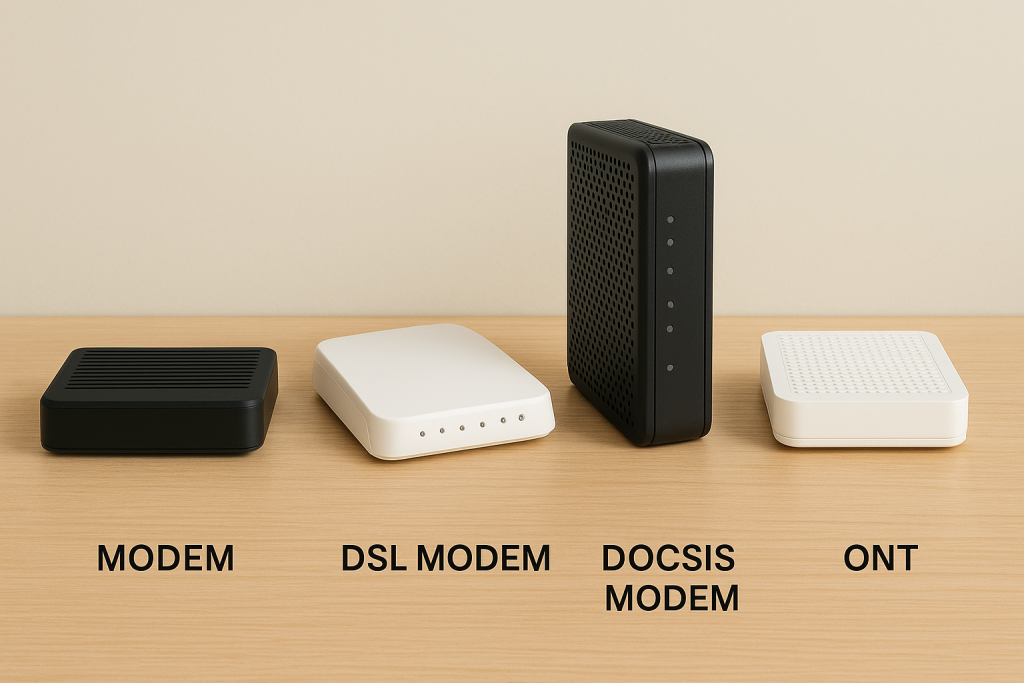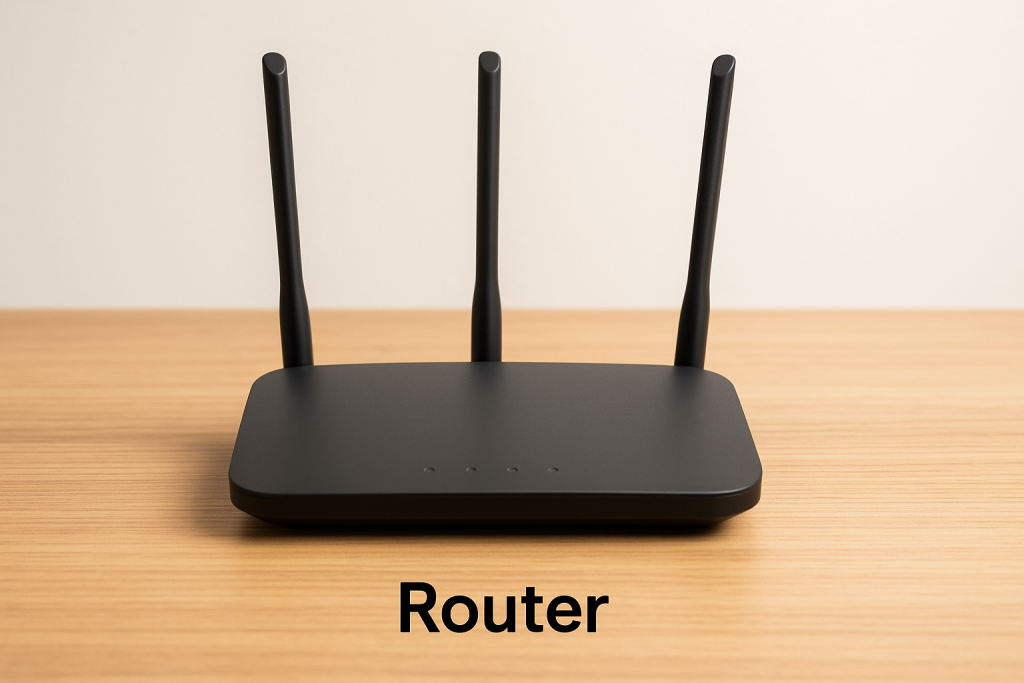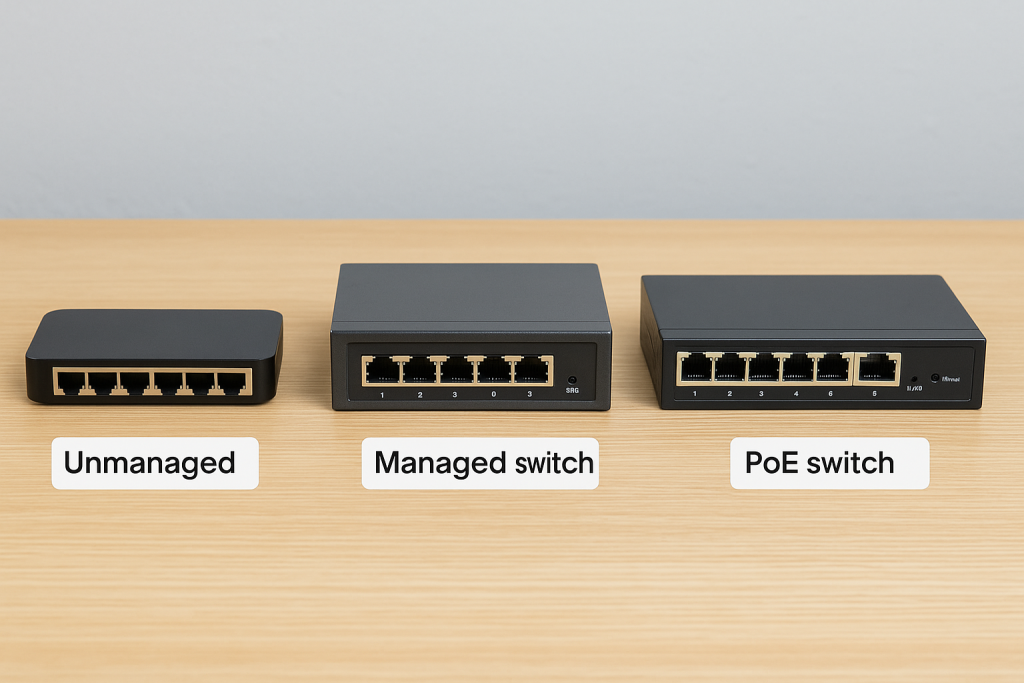Sharing notes from my ongoing learning journey — what I build, break and understand along the way.
Modem, Router, Switch and Access Point: What They Are and How They Work
Understanding Modem, Router, Switch and Access Point
When it comes to using the internet at home or at work, a few device names keep popping up: modem, router, switch, and access point. These names often get mixed up, and since many all-in-one devices combine several of them in a single box, it becomes even harder to understand what each one actually does. When the internet slows down or the Wi-Fi cuts out, we ask ourselves: “Is the problem with the modem or with the Wi-Fi?” But without a clear grasp of these devices’ roles, it’s difficult to answer that question.
That’s why in this article, we won’t talk about network diagrams or setup steps. Instead, we’ll focus only on the devices themselves, their responsibilities, and how they function.
Modem / ONT: The First Gateway to the Internet
The modem, in its simplest form, is the device that takes the raw signal from your internet service provider (ISP) and translates it into a form your network can understand. Think of it as the translator between the outside world and your home or office network.
DSL modems decode signals over copper telephone lines, cable (DOCSIS) modems work over coaxial cables, and fiber connections use ONTs (Optical Network Terminals) that turn optical signals into electrical Ethernet. Different technologies, but the same core idea: convert the physical signal into Ethernet/IP traffic.
It’s important to note that modems do not actually “distribute” the internet on their own. Their job is to pass the connection to the next device—the router. But in everyday life, what we call a “modem” often contains more than just a modem. Many consumer devices include a built-in router and even an access point, which is why people think of the modem as the all-in-one box that does everything.
There are typically two operating modes: bridge mode and router mode. In bridge mode, the modem is transparent—it only translates the signal and leaves all the networking decisions to the router. In router mode, the modem also takes on NAT and DHCP duties, becoming a small gateway on its own. ISPs usually ship devices in router mode by default for convenience, but this can sometimes create issues like “double NAT.”

Router: The Brain of the Network
The router is the real brains of the operation in any home or office network. It decides how traffic flows, assigns IP addresses to devices, and protects the network from outside threats. If the modem is the translator, the router is the traffic cop.
One of its main jobs is performing NAT (Network Address Translation), which allows many devices inside the network to share a single public IP address on the internet. It also acts as a DHCP server, handing out IP addresses, gateways, and DNS information to devices. And with its firewall, it blocks unwanted traffic coming from the internet (WAN) into the local network (LAN).
Modern routers go further. They support VLANs to segment the network into logical parts, QoS (Quality of Service) to prioritize video calls or gaming, and VPN tunnels to allow secure remote access. With IPv6, routers can receive a delegated prefix from the ISP and distribute it to VLANs, giving each device its own globally unique address.
In short, the router is where network intelligence lives: routing, security, and policy enforcement all happen here.

Switch: The Silent Backbone
The switch is the backbone of the wired network. It doesn’t get much attention, often sitting quietly on a shelf, but its job is vital: connecting wired devices and ensuring that data gets to the right destination.
A switch learns the MAC addresses of connected devices and keeps a table. When one device sends data, the switch knows exactly which port to forward it to, instead of broadcasting to all ports. This makes communication faster and more efficient.
Switches also support VLANs, which allow you to create multiple logical networks on the same physical cables. Ports can be set as access ports (for end devices like PCs and printers, belonging to one VLAN) or trunk ports (carrying multiple VLANs, usually toward routers or access points).
Many modern switches offer PoE (Power over Ethernet), delivering both data and power over the same cable to devices like access points or IP cameras. They also use protocols like STP (Spanning Tree Protocol) to prevent loops and LACP (Link Aggregation) to combine ports for higher bandwidth and redundancy.
While the switch doesn’t directly handle internet access or routing, it provides the orderly and reliable wired foundation that everything else depends on.

Access Point: The Bridge for Wireless Devices
The access point (AP) is the bridge between wireless devices and the wired network. Phones, laptops, tablets, and smart home devices connect to the AP via Wi-Fi, and the AP passes that traffic along to the wired backbone.
APs don’t handle routing, NAT, or IP assignments (unless configured in a special router mode). Their sole job is to carry wireless traffic into the wired world.
An access point can broadcast multiple SSIDs, each mapped to a specific VLAN. For example, the “Office” SSID might map to VLAN10, the “Guest” SSID to VLAN20, and the “IoT” SSID to VLAN30. This way, even the wireless side respects the same logical network separation.
Performance depends on band planning:
- 2.4 GHz offers longer range but is more crowded.
- 5 GHz provides faster speeds but shorter range.
- 6 GHz (with Wi-Fi 6E and beyond) opens up new, cleaner spectrum.
Features like MIMO, MU-MIMO, and OFDMA improve efficiency, while roaming standards (802.11k/v/r) allow devices to switch between APs smoothly. Security should always be set to WPA3 (if supported) or WPA2-AES, with WPS disabled.
Advanced APs add extras like client isolation, captive portals, and band steering to improve security and user experience. Proper placement, channel selection, and power tuning are just as important as the hardware itself.

In Short
Each device has a clear role: the modem translates the line, the router manages and secures the network, the switch organizes the wired backbone, and the access point connects wireless devices.
The confusion mostly comes from all-in-one devices, where all of these functions are crammed into a single box. But once the roles are understood separately, it becomes much easier to troubleshoot problems and design a reliable network.
In this post we focused only on what these devices are and how they work. In a follow-up article, we’ll explore how to connect them together in different scenarios, with diagrams drawn in Cisco Packet Tracer to illustrate practical topologies.
